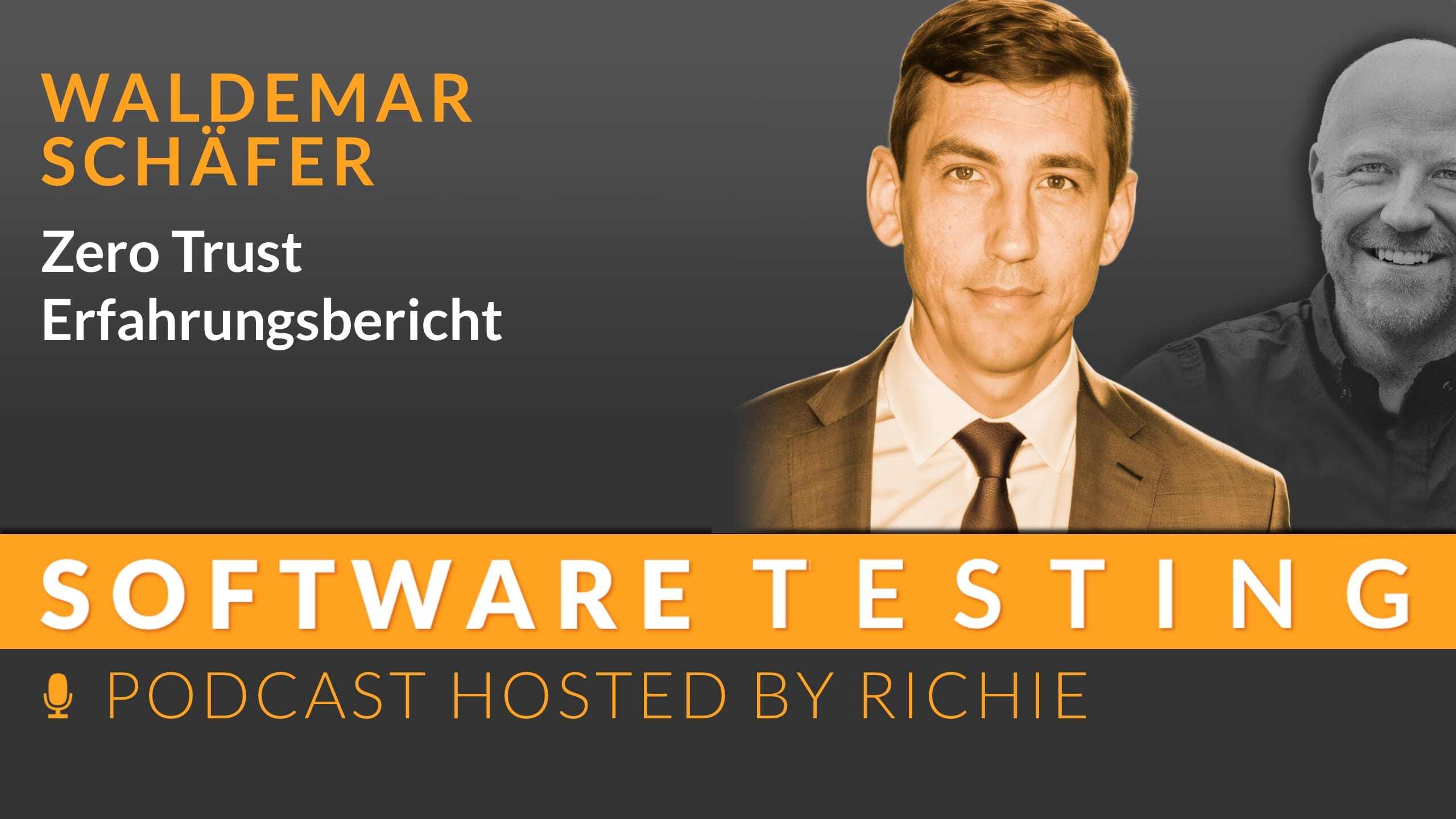Test Pyramid - A Critical Look
Everyone knows the test pyramid, everyone immediately has its image in mind. Sometimes it has three floors, sometimes four. But it is worth...

Our world is networked - and it is becoming more and more networked. Security plays a central role. And when it comes to network and data security, the buzzword Zero Trust quickly crops up. But what is actually behind it? And what can Zero Trust actually look like? This is not so easy to clarify. Let’s take a look at how Deutsche Telekom is tackling the issue.
“That’s a very good question (what Zero Trust is), especially if you go into a meeting with ten colleagues and ask (…) then you come out with eleven opinions” - Waldemar Schäfer
Waldemar Schäfer completed his studies in core informatics at the Technical University in Kaiserslautern and worked in various IT positions, from developer to system architect. He currently works as a senior enterprise architect at Deutsche Telekom, specializing in front-end architecture and security. His focus is on the implementation and research of Zero Trust in IT architecture.
Highlights of this episode:
Today I spoke to Waldemar Schäfer from Deutsche Telekom about the concept of Zero Trust. We explored what Zero Trust means, how Deutsche Telekom implemented it, the challenges they faced and how they overcame them. A deep insight into the practice of Zero Trust at one of the largest telecommunications companies.
Today I spoke with Waldemar Schäfer from Deutsche Telekom. Our main focus was on the concept of Zero Trust - a term that is becoming increasingly important in the IT security industry. Despite its growing popularity, the question remains for many: what exactly does Zero Trust mean? Waldemar shared his insights on how Deutsche Telekom has defined this concept and integrated it into its security strategy.
Waldemar made an important observation: if you ask ten different people for their definition of Zero Trust, you get eleven different opinions. This variety of interpretations reflects the complexity and multifaceted nature of the concept. At Deutsche Telekom, they therefore first had to agree on a common definition, which was a challenge.
A central point of our discussion was the presentation of the six aspects on which Deutsche Telekom builds its Zero Trust concept: Network, Identity Management (IAM), Devices, Data, Applications and Monitoring. This holistic approach shows that Zero Trust is far more than just a technology or a tool; it is a comprehensive strategy for minimizing security risks.
Waldemar gave an insight into the practical implementation of Zero Trust within Deutsche Telekom. He emphasized the importance of clarity about trust relationships and how important it is to explicitly model trust. Experience shows that especially in large companies like Deutsche Telekom, the implementation of such a concept is complex and challenging - from overcoming internal resistance to standardizing procedures.
Finally, Waldemar reflected on the future outlook and the next steps for Deutsche Telekom in the area of Zero Trust. He emphasized the ongoing need to adapt and evolve security concepts - a process that is never really finished. Deutsche Telekom is on a continuous journey to improve its security architecture in line with the principles of Zero Trust.

Everyone knows the test pyramid, everyone immediately has its image in mind. Sometimes it has three floors, sometimes four. But it is worth...

What questions should be asked when testing AI and what can testers learn from data scientists? Marco Achtziger and Gregor Endler provide insights...

How can systemic approaches in consulting and coaching transform teams and companies? Vera Hofheinz and Christoph Jung explain the importance of...